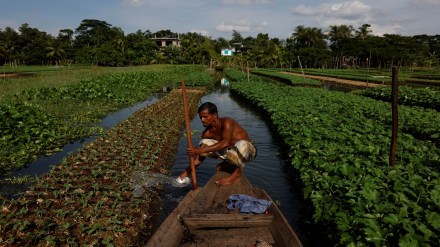In anticipation of robust demand on surplus monsoon and robust winter crops sowing, the imports of urea, di-ammonium phosphate (DAP) and NPK variants of soil nutrients have surged in the first half of the current fiscal year. This signals the government’s keenness to ensure adequate supply of fertilizers next season.
In the last kharif season, there were several reports of shortage of urea, as the production and imports could not match the demand, which spiked over 5% on year.
According to industry sources, the total volume of import of all varieties of fertilizers – urea, DAP, NPK (nitrogen, phosphorus, and potassium) and muriate of potash (MOP) – rose by over 75% to 11 million tonne (MT) during April-September of 2025-26 compared to same period in the previous fiscal.
Imports of urea and DAP have soared by 138% and 94% to 3.98 MT and 3.83 MT respectively in the first six month of FY26 compared to the same period in 2024-25.
Import of NPK variants of soil nutrients rose by over 83% to 2.02 MT in April-September, 2025-26 on year while only MOP import fell by 22% to 1.19 MT in the first half of the current fiscal.
Sources said that the government’s fertiliser subsidy bill for FY26 could see a rise from the budget estimates (BE) of Rs 1.67 lakh crore, owing to a steep rise in urea and DAP prices since the beginning of April. The rise in urea imports will have implications for the subsidy bill.
An industry expert said that overall imports of fertilizers in FY26 could exceed 18 MT, with urea accounting for over 10 MT of shipment. In FY25, fertilizer imports of all variants were around 16 MT.
“In FY25, there was a gap of about 2.8 MT of urea between demand and domestic production and imports which led to supply disruptions in the last kharif season which the government wanted to avoid in the next rabi season,” a fertilizer industry source told FE. Urea usage went up in last kharif season due to higher areas under paddy and maize.
In FY25, against the sales of 38 MT, the domestic production was around 30.6 MT and imports were 5.7 MT leading to supply disruption.
India had to depend on imports for about 60% of its annual 10 – 11 MT of DAP consumption. In addition, domestic manufacturing of DAP also depends on key raw materials ‘rock phosphate’ mostly imported from Senegal, Jordan, South Africa and Morocco.
While for potash, the country is entirely dependent on imports. India has signed a long term agreement for supply of about 2 MT of fertilizer annually from Russia, Israel, Belarus and Jordan.
Since 2012, the retail urea price has been Rs 242 per 45 kg bag, even as the cost of production is over Rs 2,600 a bag.
While the government covers the cost difference via subsidy to the manufacturers, the low retail price has led to overuse of urea, leading to decline in soil health.
Agriculture minister Shivraj Singh Chouhan has alluded to diversion of urea for non-agricultural purposes given the low prices, which has added to the spike in demand.
